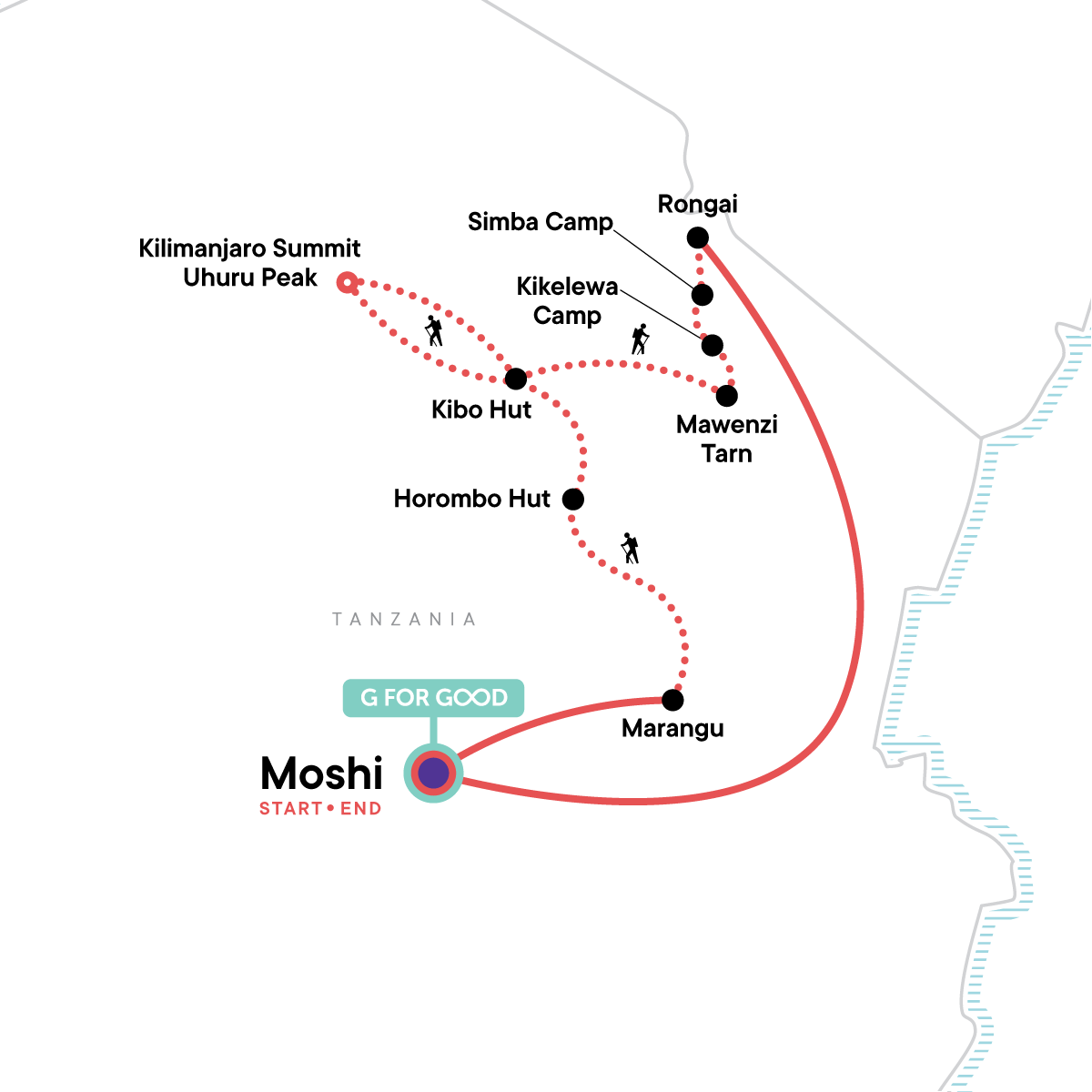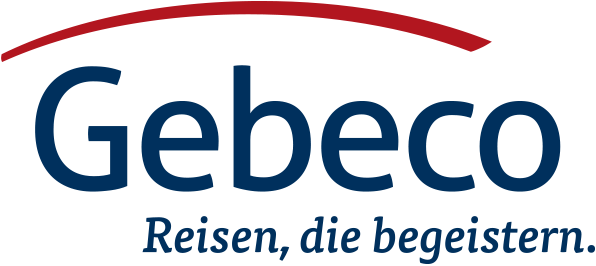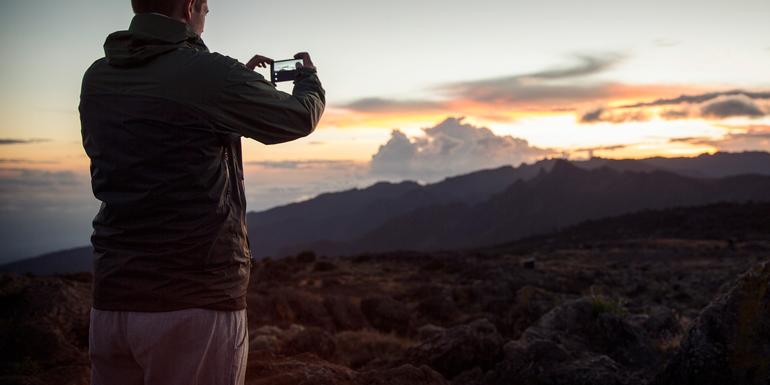Kilimandscharo – Rongai-Route
- Trip code: 478X116
- Dauer: 8
- Stil: Active
Erobere Afrikas höchsten Gipfel über die trockenere Nordseite des Bergs. Folge der Rongai-Route und besteige den Berg von Norden her. Der Abstieg erfolgt über die beliebte Marangu-Route mit ihren vielfältigen Klimazonen und atemberaubenden Ausblicken. Diese leichtere Route hat aufgrund des langsamen Aufstiegs eine hohe Erfolgsquote. Du zeltest am einzigen See auf dem Berg und genießt eine fantastische Aussicht über Kenias Amboseli-Tiefland. Einheimische Bergführer, Köche und Träger unterstützen dich auf deiner Tour und beim Camping unterwegs.
Übersicht
Group Leader
Zertifizierter Bergführer während der ganzen Reise, örtlicher Vertreter, Koch, Träger
Accommodation
Einfache Hotels (2 Nächte), Full-Service-Camping in den Bergen (5 Nächte)
Introduction
Erobere Afrikas höchsten Gipfel über die trockenere Nordseite des Bergs. Folge der Rongai-Route und besteige den Berg von Norden her. Der Abstieg erfolgt über die beliebte Marangu-Route mit ihren vielfältigen Klimazonen und atemberaubenden Ausblicken. Diese leichtere Route hat aufgrund des langsamen Aufstiegs eine hohe Erfolgsquote. Du zeltest am einzigen See auf dem Berg und genießt eine fantastische Aussicht über Kenias Amboseli-Tiefland. Einheimische Bergführer, Köche und Träger unterstützen dich auf deiner Tour und beim Camping unterwegs
Highlights
Nimm eine weniger oft gegangene Route auf den Kilimandscharo, erobere Afrikas höchsten Berg, wandere durch abwechslungsreiche Ökosysteme auf den Gipfel
Meals Included
7 Frühstück, 6 Mittagessen, 5 Abendessen
Meal Budget
Plane USD70-95 für nicht inbegriffene Mahlzeiten ein
Start / Finish
von Moshi
Transport
Privater Kleinbus, Trekking
Group Size Notes
Max. 12, im Schnitt 10
What's Included
Dein G-for-Good-Moment: Moshi-Frauenkooperative, Moshi
Dein Welcome-Moment: Anreise und Begrüßungstreffen. 6-tägige geführte Gruppenwanderung über die Rongai-Route auf den Kilimandscharo mit einheimischen Guides, Köchen und Trägern. Alle Genehmigungen und Gebühren. Alle Transfers zwischen den Reisezielen sowie zu inbegriffenen Aktivitäten und zurück
Packing Note
When packing your gear, the best clothing for trekking is either wool or synthetic materials, as this is quick-drying and can keep heat in better. The optimum clothing for trekking is layering, as it allows for easy temperature regulation as you ascend or descend. We suggest a base-layer, then a mid-layer such as a sweater, followed by a fleece jacket or similar, then a windproof and waterproof jacket. For your bottom half, thermal underwear, hiking pants then windproof and waterproof layers are recommended.
You will be on the move a lot, so our advice is to pack as lightly as possible. Your baggage should be clearly labelled and restricted to one soft compact suitcase, sports bag, or backpack, no larger than 30cm(height) x 30cm(width) x 60cm(length), maximum 15kg, plus a day-pack (5kg).
Below are the suggest sizes for both medium and large rucksacks with a maximum weight of 15kg.
Medium Rucksacks: 48 Litre to 58Litre
Large Rucksacks: 60+ Litres
Packing Note
A refillable water bottle/flask is required for the trek, no plastic or disposable bottles are allowed on the mountain and they may be confiscated prior to the hike
Checklist
Documents:
• Flight info (required) (Printouts of e-tickets may be required at the border)
• Insurance info (required) (With photocopies)
• Passport (required) (With photocopies)
• Vouchers and pre-departure information (required)
• Visas or vaccination certificates (With photocopies)
Essentials:
• Toiletries (required) (Shampoo, bodywash, soap, etc.)
• Binoculars (optional)
• Camera (With extra memory cards and batteries)
• Cash, credit and debit cards
• Day pack (Used for daily excursions or short overnights)
• Ear plugs
• First-aid kit (should contain lip balm with sunscreen, sunscreen, whistle, Aspirin, Ibuprofen, bandaids/plasters, tape, anti-histamines, antibacterial gel/wipes, antiseptic cream, Imodium or similar tablets for mild cases of diarrhea, rehydration powder, water purification tablets or drops, insect repellent, sewing kit, extra prescription drugs you may be taking)
• Flashlight/torch (Headlamps are ideal)
• Fleece top/sweater
• Footwear
• Hat
• Locks for bags
• Long pants/jeans
• Moneybelt
• Outlet adapter
• Personal entertainment (Reading and writing materials, cards, music player, etc.)
• Reusable water bottle
• Shirts/t-shirts
• Sleepwear
• Small travel towel
• Sunglasses
• Swimwear
• Watch and alarm clock
• Waterproof backpack cover
• Windproof rain jacket
Health & Safety:
• Hand sanitizer (required)
• Face masks (Clients will be only be required to wear a face mask where it is mandated by local regulations.)
• Pen (Please bring your own pen for filling out documents.)
• Quick Covid Test/Antigen Test (optional)
Kilimanjaro - Available for Rent:
• Balaclava ($5 USD)
• Camel bag (Water bag) ($15 USD)
• Chamber ($200 USD)
• Crampons ($40 USD)
• Day pack ($30 USD)
• Down jacket ($20 USD)
• Duffel bag ($6 USD)
• Fleece pants ($6 USD)
• Fleece top/sweater ($5 USD)
• Gaiters ($10 USD)
• Gloves ($6 USD)
• Gloves - Finger ($10 USD)
• Gloves - Finger Liner ($5 USD)
• Goggles - SKI ($15 USD)
• Head Torch ($15 USD)
• Mobile Toilet ($236 USD)
• Oxygen ($118 USD)
• Poncho ($20 USD)
• Rain jacket or poncho ($12 USD)
• Rain jacket / windproof ($15 USD)
• Rucksack cover ($10 USD)
• Scarf or neck warmer ($5 USD)
• Sleeping bag ((-25 to -35°C) $40 USD; If you are planning to rent a sleeping bag for your Mt Kilimanjaro trek, please let your booking agent know so that we can prepare your group leader.)
• Summit Jacket ($20 USD)
• Summit socks ($5 USD)
• Sunglasses ($10 USD)
• Sweater ($10 USD)
• Thermal top ($10 USD)
• Thermal underwear ($10 USD)
• Walking poles ($12 USD for two poles)
• Walking trouser ($15 USD)
• Warm hat ($15 USD)
• Water Bottle ($15 USD)
• Windproof rain pants ($15 USD)
Kilimanjaro - Other:
• Electrolytes (Powder or tablets, optional)
• Hand sanitizer
• Medication (Consult with your doctor about options to manage altitude sickness)
• Metal/aluminum water bottle (This style of bottle can double as a heat source at night when filled with hot water. We recommend a Sigg-style bottle.)
• Moisturizer/lip balm
• Pee bottle and/or She-Wee (You can use these items to avoid having to leave the tent at night)
• Reusable water bottle (Water bottles should carry up to 3 litres of water (minimum 2 litres); please note that this recommendation is made based off of the water intake of the average hiker, but may vary due to personal needs. We recommend platypus-type water bladders/camel backs made out of a material that will prevent water from freezing at high altitudes.)
• Sunblock
• Toilet paper
• Wet wipes (Recommended)
Kilimanjaro - Technical Clothing:
• Waterproof lightweight hiking boots (required)
• Windproof rain jacket (required) (A breathable jacket, with a hood is recommended)
• Balaclava (Optional)
• Fleece jacket or warm layer
• Fleece pants
• Gaiters (Optional)
• Hat (A hat with a brim is recommended)
• Hiking pants (Convertible/Zip-off and quick dry recommended)
• Insulated Jacket
• Light gloves
• Lightweight wicking shirts
• Long-sleeved shirt for hiking (2 moisture-wicking shirts, and 1 breathable shirt recommended)
• Quick-dry socks (Wool or synthetic)
• Shorts (Optional)
• Short sleeve t-shirt, light-weight, moisture-wicking
• Slip-on sandals or shoes (Optional extra shoes to wear around camp)
• Thermal underwear (Moisture-wicking fabric recommended)
• Underwear (Moisture-wicking fabric recommended)
• Warm gloves (Waterproof recommended)
• Warm hat
• Waterproof pants (Pants with a side zipper recommended)
Kilimanjaro - Technical Gear:
• Day pack (30-35L - can be rented in location)
• Drybag (Will help keep cameras and essentials dry)
• Dufflel bag (50-90L - can be rented in location)
• Sleeping bag and liner, 4 season (Sleeping bags can be rented for approximately $40 USD for the duration of the tour; if you are planning to rent a sleeping bag, please let your booking agent know so that we can prepare your group leader. Purchasing sleeping bags in Arusha might be more difficult to source.)
• Walking poles (Highly recommended)
Bitte beachte: When packing your gear, the best clothing for trekking is either wool or synthetic materials, as this is quick-drying and can keep heat in better. The optimum clothing for trekking is layering, as it allows for easy temperature regulation as you ascend or descend. We suggest a base-layer, then a mid-layer such as a sweater, followed by a fleece jacket or similar, then a windproof and waterproof jacket. For your bottom half, thermal underwear, hiking pants then windproof and waterproof layers are recommended.
You will be on the move a lot, so our advice is to pack as lightly as possible. Your baggage should be clearly labelled and restricted to one soft compact suitcase, sports bag, or backpack, no larger than 30cm(height) x 30cm(width) x 60cm(length), maximum 15kg, plus a day-pack (5kg).
Below are the suggest sizes for both medium and large rucksacks with a maximum weight of 15kg.
Medium Rucksacks: 48 Litre to 58Litre
Large Rucksacks: 60+ Litres
Bitte beachte: A refillable water bottle/flask is required for the trek, no plastic or disposable bottles are allowed on the mountain and they may be confiscated prior to the hike
Optional Activities
Moshi
- „Moshi Mamas“ Massage
Internationale Flüge
Check-in-Zeiten und Freigepäck/Einschränkungen können je nach Fluggesellschaft variieren und sich jederzeit ändern. Für die aktuellsten Informationen zu deinem Flug wende dich bitte an deine Fluggesellschaft. Wir empfehlen Online-Check-in, um mögliche Verzögerungen am Flughafen zu vermeiden
Minimum Age
Um ohne Begleitperson mit G Adventures zu reisen, musst du mindestens 18 Jahre alt sein. Das Mindestalter für Kinder in Begleitung eines Erziehungsberechtigten (über 21) beträgt 12 Jahre
Itinerary
Day 1 Moshi
Ankunft zu jeder Zeit möglich
Day 2 Moshi/Simba Camp
Steige die seltener besuchten Nordhänge hinauf und erlebe vielfältige Ökosysteme
Day 3 Simba Camp/Kikelelwa Camp
Setze den Aufstieg fort und genieße atemberaubende Ausblicke auf die östlichen Eisfelder
Day 4 Kikelelwa Camp/Mawenzi Tarn Camp
Steige durch grasbewachsene Hänge hinauf in einen Abschnitt mit einzigartiger Aussicht
Day 5 Mawenzi Tarn Camp/Kibo
Wandere langsam durch den berühmten „Saddle“ zwischen dem Mawenzi- und Kibo-Gipfel
Day 6 Kibo Camp/Horombo Camp
Nächtlicher Aufstieg zum Gipfel via Gillman's Point. Genieße den wunderschönen Sonnenaufgang, danach Abstieg zum Horombo Hut Camp
Day 7 Horombo Camp/Marangu
Setze den Abstieg über die bewaldeten niederen Hänge bis nach Moshi fort. Lerne bei einer Kletter-Zeremonie die Frauen der von G Adventures unterstützten Moshi-Frauenkooperative kennen
Day 8 Moshi
Abreise zu jeder Zeit möglich
Detailed Itinerary

Day 1 Moshi
Day 2 Moshi/Simba Camp
Day 3 Simba Camp/Kikelelwa Camp
Day 4 Kikelelwa Camp/Mawenzi Tarn Camp
Day 5 Mawenzi Tarn Camp/Kibo
Day 6 Kibo Camp/Horombo Camp
Day 7 Horombo Camp/Marangu
Es geht weiter durch Moorland zur Mandara-Hütte (2.770 m), dem ersten Zwischenstopp auf der Marangu-Route. Über einen guten Weg steigen wir durch schönen, üppigen Wald zum Tor des Nationalparks bei Marangu ab (1.879 m). Transfer zum Hotel in Moshi für eine wohlverdiente Nacht in relativem Komfort.
Day 8 Moshi



